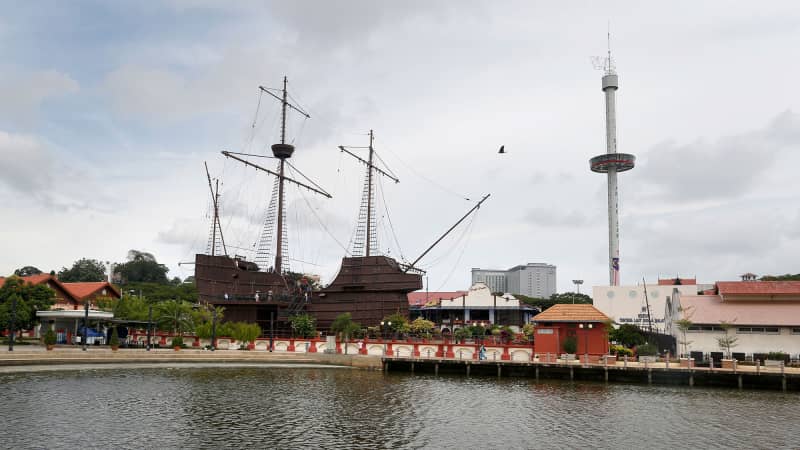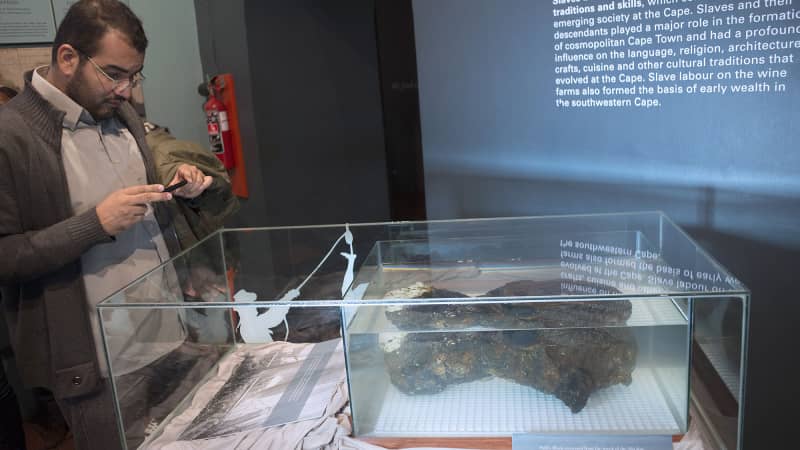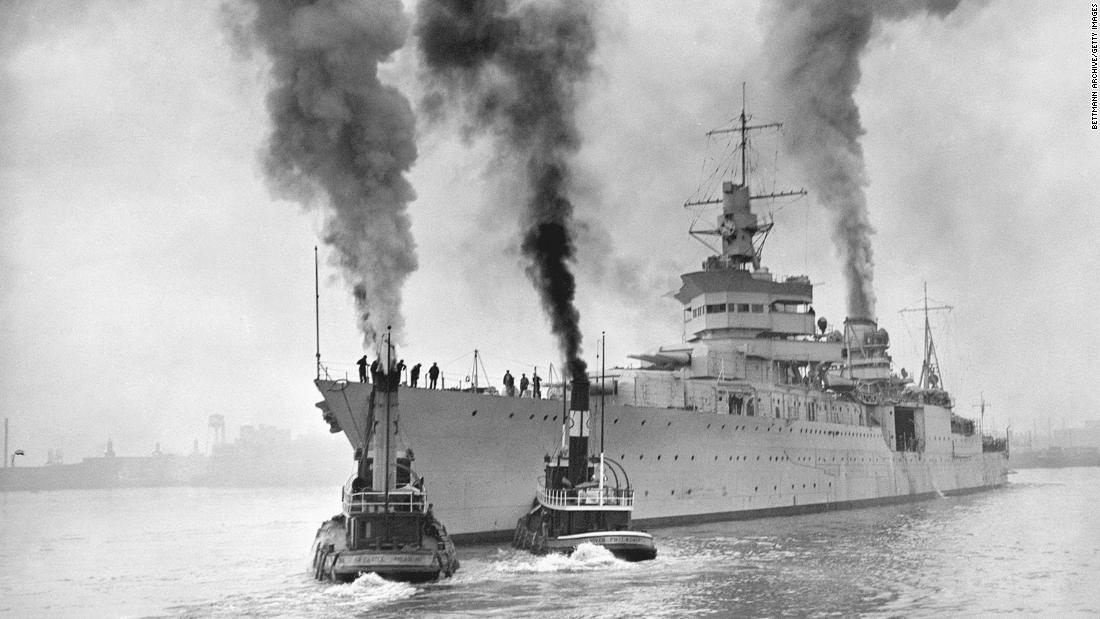But scores more sunken vessels remain on the ocean floor, awaiting rediscovery.
Here are some of the world’s most infamously elusive shipwrecks, plus a few you can see for yourself (some without even getting wet).
Santa Maria, Haiti
That’s one theory, anyway. However the Italian explorer’s ship met its fate, excitement bubbled over in May 2014, when archaeologist Barry Clifford claimed he’d chanced upon its long-lost wreck.
The Santa Maria is still down there, somewhere.
Flor de la Mar, Sumatra

A replica of the Flor de la Mar stands in front of the Maritime Museum in Malacca, Malaysia.
Tim Wimborne/Reuters
Perhaps it was only a matter of time before the Flor de la Mar went down, which it did in a heavy storm off Sumatra, Indonesia in 1511.
Most of the crew perished, and its booty — said to include the entire personal fortune of a Portuguese governor, worth a cool $2.6 billion in today’s money — was lost.
SS Waratah, Durban (South Africa)
It may not have its own theme song sung by Celine Dion, but the SS Waratah is known as “Australia’s Titanic” — and for good reason.
A passenger cargo ship built to travel between Europe and Australia with a stopover in Africa, the Waratah disappeared shortly after steaming off from the city of Durban in present-day South Africa in 1909 — just three years before the Titanic tragedy. As for the cause, theories abound.
The entire liner, complete with eight staterooms, music lounge and all 211 passengers and crew, was never found. Ninety years after the Waratah went down, the National Underwater and Marine Agency thought they’d finally found it, but it was a false alarm.
Said the late thriller writer Clive Cussler, who spent much of his life searching for the wreck, “I guess she is going to continue to be elusive a while longer.”
USS Indianapolis, Philippine Sea
Rotten Tomatoes’ “Tomatometer” might rack up a rancid 17% for the 2016 Nicolas Cage movie, “USS Indianapolis: Men of Courage,” but in real life, the ship played a game-ending role in World War II.
The drop-off of the deadly cargo went without a hitch, but on its return journey, the Indianapolis was hit by a Japanese sub, with many crew members perishing from shark attacks and salt poisoning.
Slave ships, North Atlantic Ocean

A man takes a picture of a pulley block, one of several recovered artefacts brought up from sunken São José.
Rodger Bosch/AFP/Getty Images
Not just one shipwreck, but an entire ghastly genre of them.
It’s estimated some 1,000 ships now on the bottom of the ocean were complicit in the wicked “triangular trade” across the Atlantic that saw some 12-13 million Africans forced into slavery.
Others, like the Clotilda, were purposefully scuttled by their owners, to cover up evidence of slave trading, long after the 1807 Act Prohibiting Importation of Slaves.
It’s impossible to retrieve such objects without also dredging up stories of human suffering, although DWP’s goal is to document slavery’s nefarious legacy, using it to educate and enlighten.
Still, such ships are notoriously elusive, and many may never see the light of day again.
Shipwrecks you can visit
Uluburun, Bodrum
Mehmed Çakir was diving for sponges off the coast of Yalıkavak, Turkey in 1982, when he happened upon the remains of a trading ship that had sunk here some 3,000 years previous.
The Vasa, Stockholm
Eerily intact, the 17th century warship Vasa looks more like a prop from the “Pirates of the Caribbean” franchise, than a ship that first (and last) set sail in 1628.
The Swedish behemoth made it about 1,300 meters out of port before it went down, and was only pulled from its silty grave some 333 years later.
Since a dedicated museum opened in Stockholm in 1990, the Vasa has become one of the world’s least elusive shipwrecks, ogled so far by some 25 million visitors.
MV Captayannis, River Clyde
Spied from the banks of the River Clyde at Greenock in Scotland, you might mistake the wreck of the MV Captayannis for a recently demised whale.
The black hull of this Greek sugar-carrying boat, rolled onto its side, is a favorite perch for feathered residents of a nearby bird sanctuary — and has been, since the ship went down in a squall in January 1974.
It’s said no one took responsibility for the so-called “sugar boat,” hence why it’s still wedged into a sandbank — a gauche reminder of the sea’s capriciousness.
Chuuk Lagoon, Micronesia
If scuba diving is what floats your boat, chances are you’ve heard of Chuuk Lagoon.
On this sprinkling of islands 1,000 miles northeast of Papua New Guinea, the Japanese set up their most formidable World War II naval base — that is, until Operation Hailstone was launched in 1944, with Allied forces sending some 60 Japanese ships and aircraft to a watery grave.
MS World Discoverer, Solomon Islands
“Open 24 hours” declares Google Maps optimistically about the shipwreck of the MS World Discoverer.
Since the cruise ship MS World Discoverer struck something hard, and half-sank off the shores of Roderick Bay in the Solomon Islands in 2000, it’s become a tourist attraction for passing ships (all passengers, it should be pointed out, were helped to safety).
Gently rusting away, at a 46-degree list, the ship looks like it turned on its side, and went to sleep. If nothing else, it’ll have you counting the lifeboats on your own vessel as you sail by.

